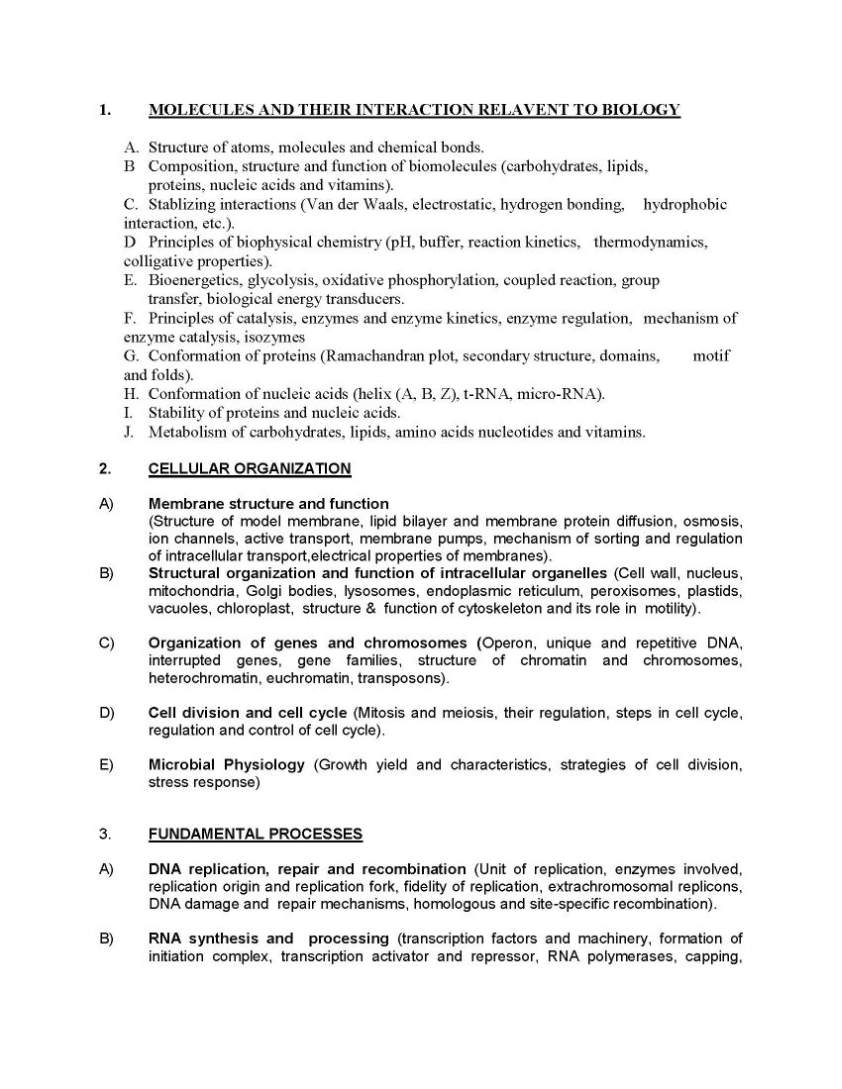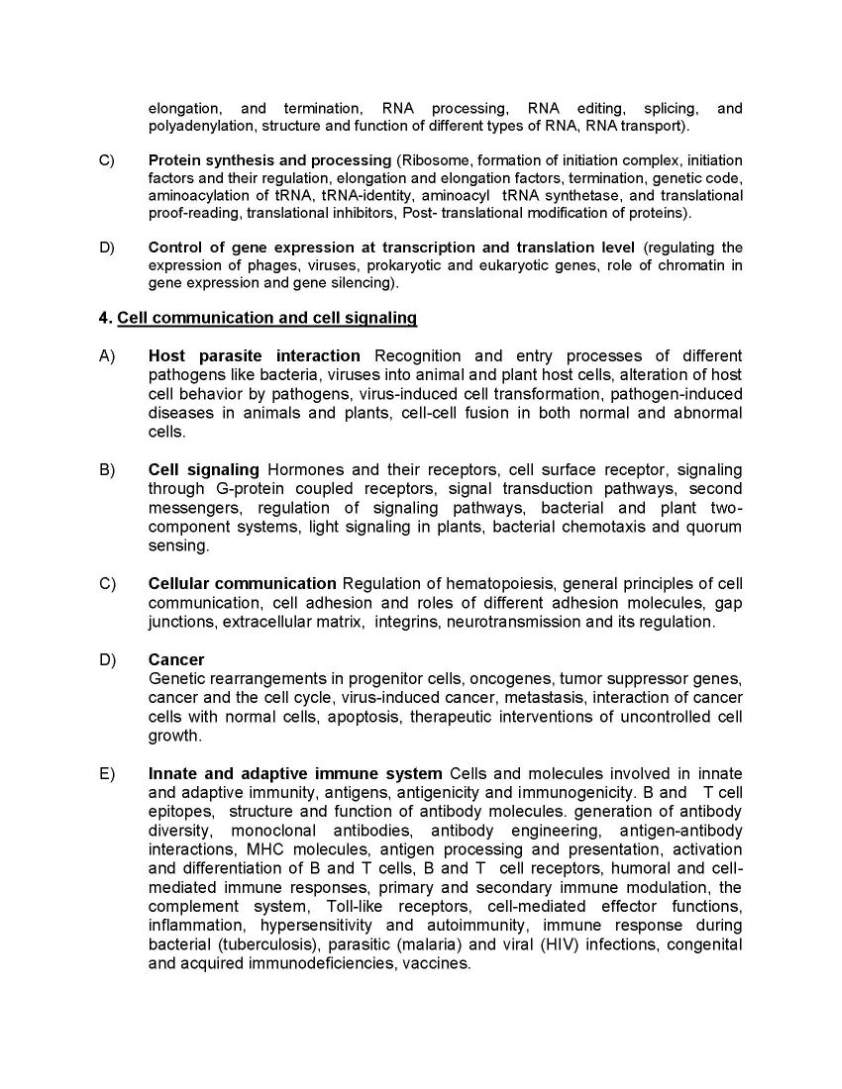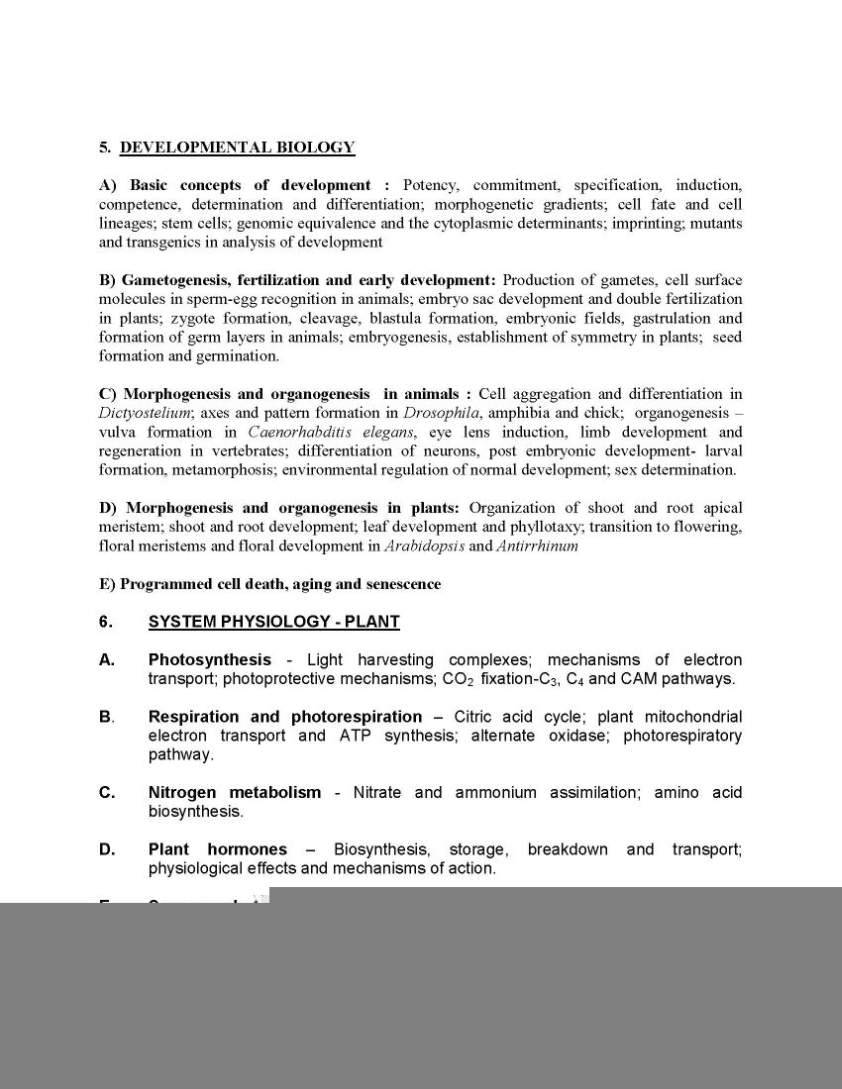|
#2
25th August 2014, 03:17 PM
| |||
| |||
| Re: NET Life Science Stream Exam Syllabus
As per your request here I am sharing the Syllabus of CSIR – UGC NET Life Science Exam 1. MOLECULES AND THEIR INTERACTION RELAVENT TO BIOLOGY A. Structure of atoms, molecules and chemical bonds. B Composition, structure and function of biomolecules (carbohydrates, lipids, proteins, nucleic acids and vitamins). C. Stablizing interactions (Van der Waals, electrostatic, hydrogen bonding, hydrophobic interaction, etc.). D Principles of biophysical chemistry (pH, buffer, reaction kinetics, thermodynamics, colligative properties). E. Bioenergetics, glycolysis, oxidative phosphorylation, coupled reaction, group transfer, biological energy transducers. F. Principles of catalysis, enzymes and enzyme kinetics, enzyme regulation, mechanism of enzyme catalysis, isozymes G. Conformation of proteins (Ramachandran plot, secondary structure, domains, motif and folds). H. Conformation of nucleic acids (helix (A, B, Z), t-RNA, micro-RNA). I. Stability of proteins and nucleic acids. J. Metabolism of carbohydrates, lipids, amino acids nucleotides and vitamins. 2. CELLULAR ORGANIZATION A) Membrane structure and function (Structure of model membrane, lipid bilayer and membrane protein diffusion, osmosis, ion channels, active transport, membrane pumps, mechanism of sorting and regulation of intracellular transport,electrical properties of membranes). B) Structural organization and function of intracellular organelles (Cell wall, nucleus, mitochondria, Golgi bodies, lysosomes, endoplasmic reticulum, peroxisomes, plastids, vacuoles, chloroplast, structure & function of cytoskeleton and its role in motility). C) Organization of genes and chromosomes (Operon, unique and repetitive DNA, interrupted genes, gene families, structure of chromatin and chromosomes, heterochromatin, euchromatin, transposons). D) Cell division and cell cycle (Mitosis and meiosis, their regulation, steps in cell cycle, regulation and control of cell cycle). E) Microbial Physiology (Growth yield and characteristics, strategies of cell division, stress response) 3. FUNDAMENTAL PROCESSES A) DNA replication, repair and recombination (Unit of replication, enzymes involved, replication origin and replication fork, fidelity of replication, extrachromosomal replicons, DNA damage and repair mechanisms, homologous and site-specific recombination). B) RNA synthesis and processing (transcription factors and machinery, formation of initiation complex, transcription activator and repressor, RNA polymerases, capping elongation, and termination, RNA processing, RNA editing, splicing, and polyadenylation, structure and function of different types of RNA, RNA transport). C) Protein synthesis and processing (Ribosome, formation of initiation complex, initiation factors and their regulation, elongation and elongation factors, termination, genetic code, aminoacylation of tRNA, tRNA-identity, aminoacyl tRNA synthetase, and translational proof-reading, translational inhibitors, Post- translational modification of proteins). D) Control of gene expression at transcription and translation level (regulating the expression of phages, viruses, prokaryotic and eukaryotic genes, role of chromatin in gene expression and gene silencing). 4. Cell communication and cell signaling A) Host parasite interaction Recognition and entry processes of different pathogens like bacteria, viruses into animal and plant host cells, alteration of host cell behavior by pathogens, virus-induced cell transformation, pathogen-induced diseases in animals and plants, cell-cell fusion in both normal and abnormal cells. CSIR – UGC NET Life Science Exam Syllabus     Rest of the Syllabus is attached in below file which is free of cost |